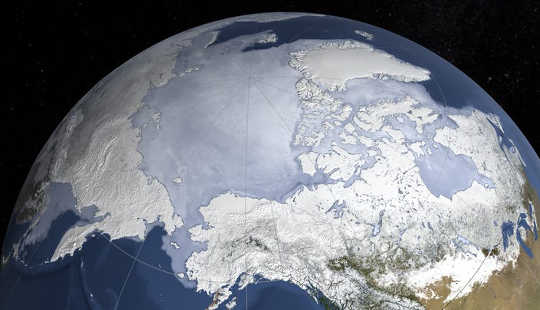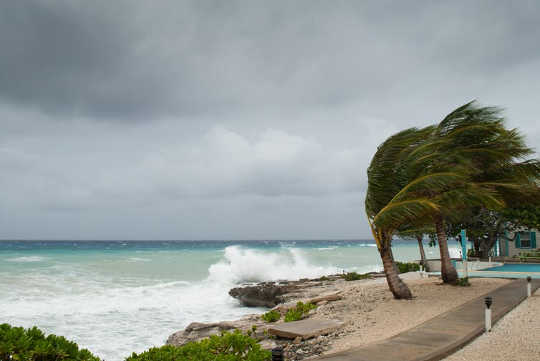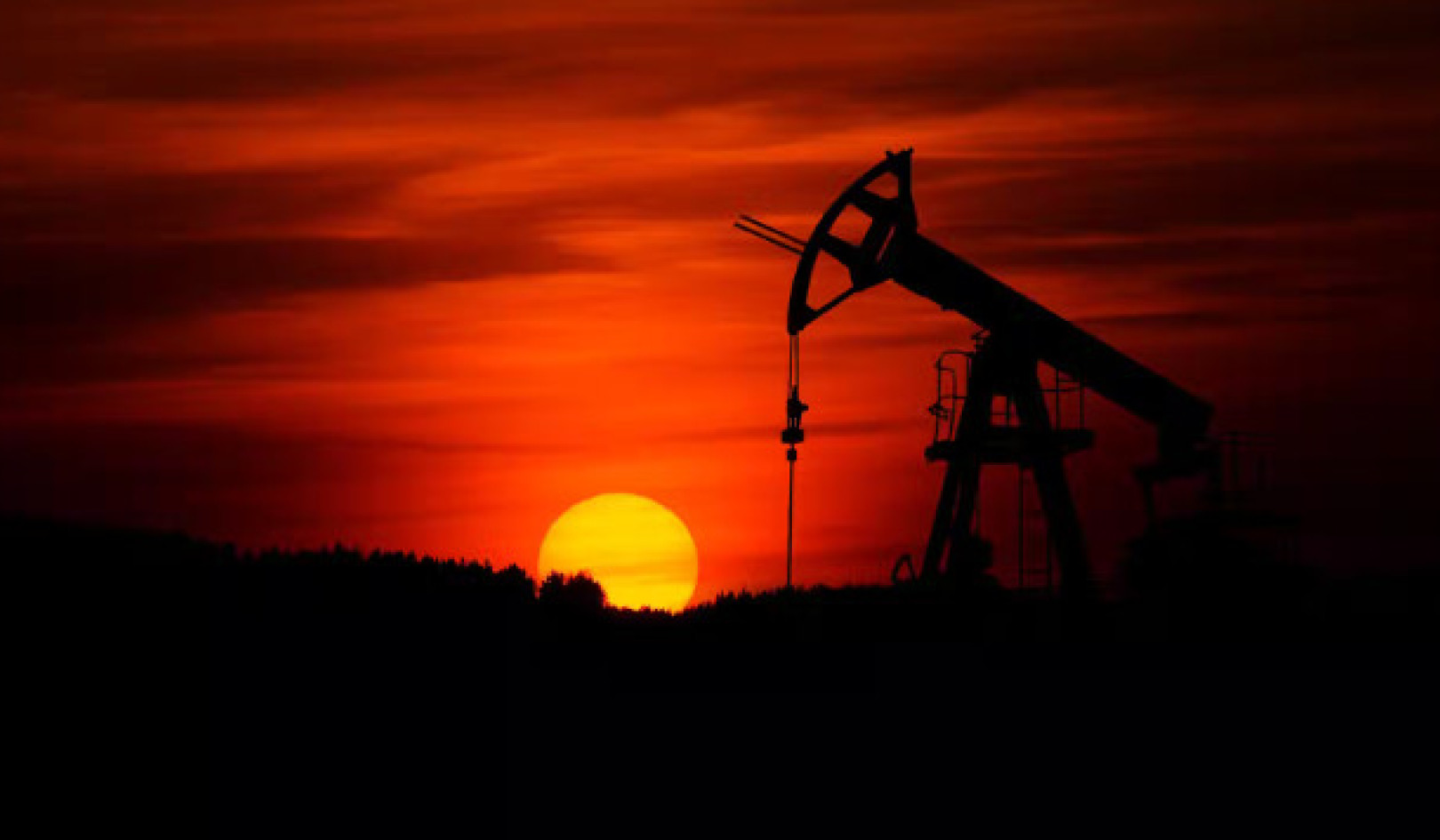
elRoce / shutterstock
Verdens klimaforskere har talt: hvis vi vil begrænse menneskeskabt global opvarmning til 1.5? det kan vi nok. Men det bliver hårdt, givet hvor vi starter fra.
Det er konklusionen af en ny rapport by the UN’s Intergovernmental Panel on Climate Change (IPCC). The focus on 1.5? is the result of years of international negotiation. Starting in 1994, a central aim of the UN’s climate change efforts (the Framework Convention on Climate Change, or UNFCCC) was to stabilise greenhouse gas concentrations at a level that would “prevent dangerous anthropogenic interference with the climate system”. Much was written on what this meant, particularly the word “dangerous”.
Negative virkninger af klimaændringer forekommer på et kontinuum, og det er vanskeligt og omstridt at definere et punkt, hvor klimaændringer bliver farlige. På den anden side er klimaændringsforhandlinger vanskelige uden et mål at arbejde hen imod.
Fifteen years later, the UNFCCC’s Copenhagen Accord introduced a 2? target, and its 2015 Paris-aftalen was even more specific: it “aims to strengthen the global response to the threat of climate change … by holding the increase in … temperature to well below 2? above pre-industrial levels and pursuing efforts to limit the … increase to 1.5?”.
IPCC yder videnskabelig rådgivning til UNFCCC, som laver politik, og IPCC har aldrig selv angivet et temperaturmål. Den opregner dog risici for klimaændringer ved hjælp af fem "grunde til bekymring". Disse omfatter påvirkninger såsom "unikke og truede økosystemer og kulturer" (såsom koralrev) og "ekstreme vejrbegivenheder", som hver især er vurderet på en skala fra "uopdagelig" til "meget høj". IPCC's seneste (2014) Femte vurdering of the scientific evidence found that at around 1.5? warming there was a transition fra moderat til høj risiko for truede økosystemer og kulturer og for ekstreme vejrbegivenheder. Der er således overensstemmelse mellem Paris- og IPCC-vurderingerne.
 Klimaændringer vil gøre nogle typer ekstremt vejr mere almindelige. Drew McArthur/Shutterstock
Klimaændringer vil gøre nogle typer ekstremt vejr mere almindelige. Drew McArthur/Shutterstock
The Paris Agreement asked the IPCC to report on the impacts of global warming of 1.5?, and this new publication is the result. Its tone is not “we must avoid 1.5? warming”, as you might think from many commentators, but more “if we want to avoid 1.5? warming, this is what must be done”. The report contrasts the impact of 1.5? and 2? warmings, giving information on what would be gained by the extra effort needed to limit warming to 1.5?.
As the IPCC’s reports are largely based on a critical assessment and synthesis of published scientific papers, many of its latest conclusions are unsurprising. There are many well recognised uncertainties in understanding climate change - for instance, even if we set a course aiming to hit 1.5? (which is mostly determined by future CO? emissions), we could end up hitting, say, 1? or 2? instead. The report provides uncertainty ranges in its estimates and confidence levels, based on expert judgement.
The new report tells us that human activity has already caused about 1? of global warming, while at the present rate of warming (0.2? per decade) we’ll hit 1.5? by about 2040. National pledges made as part of the Paris Agreement still mean we are on course for warming of about 3? by 2100, meaning four of the five “reasons for concern” would then be in the high to very-high risk category.
Achieving the 1.5? target will require anthropogenic CO? emissions to decline by 45% by 2030 (relative to 2010). By 2050, they will need to reach “net zero” - any further CO? emissions due to human activity would then have to be matched by bevidst fjernelse of CO? already in the atmosphere, including by planting trees. Net zero would have to occur by around 2075 to meet a 2? target.
 Et genplantningsprojekt i Thailand. Somrerk Witthayanantw/Shutterstock
Et genplantningsprojekt i Thailand. Somrerk Witthayanantw/Shutterstock
Many illustrations are given for the difference between 1.5? and 2? worlds. At 1.5?, summertime Arctic sea ice is projected to disappear once per century, compared to once per decade at 2?; 8% of plants that have been studied would lose half their climatically-suitable area, compared to 16%; sea level rise would be 10cm less (with 10m fewer people impacted at today’s population levels); and while coral reefs might decline by a further 80% at 1.5?, they could virtually disappear at 2?.
The report identifies various routes by which emissions cuts would limit warming to 1.5?; each makes assumptions about future changes in, for example, economic strategy, population growth and the rate at which low carbon energy is adopted. The IPCC recognises the challenges are “unprecedented in scale” but notes, for example, “the feasibility of solar energy, wind energy and electricity storage mechanisms have substantially improved over the past few years”.
The report is sensitive to the fact that changes required to meet 1.5? must be consistent with the UN’s wider mål for bæredygtig udvikling. Begrænsning af klimaændringer vil hjælpe med at nå mål forbundet med sundhed, ren energi, byer og oceaner. Men der er potentielle negative indvirkninger på andre (fattigdom, sult, vand, adgang til energi) "hvis det ikke håndteres omhyggeligt".
Så hvor næste gang? Selvfølgelig vil konklusionerne blive diskuteret bredt på mange niveauer, men øjnene vil være rettet mod UNFCCC's svar på dets næste møde, i Katowice, Polen, i begyndelsen af december.![]()
Om forfatteren
Keith Shine, Regius professor i meteorologi og klimavidenskab, University of Reading
Denne artikel er genudgivet fra The Conversation under en Creative Commons-licens. Læs oprindelige artikel.
Relaterede bøger
at InnerSelf Market og Amazon






















